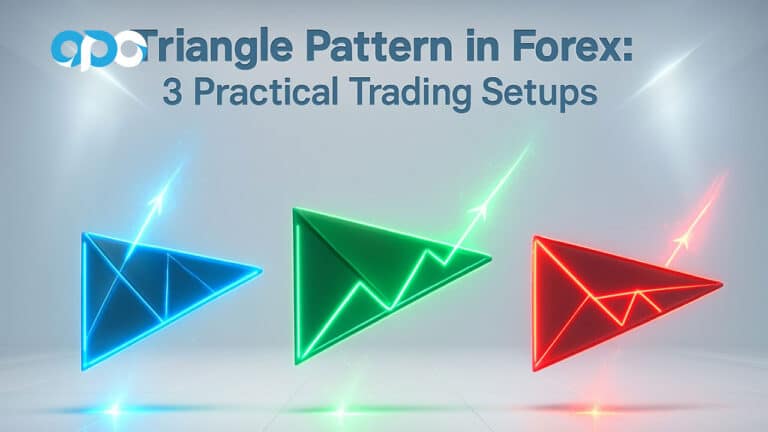How to trade silver in forex is a topic that appeals to many traders because silver offers a unique opportunity to diversify portfolios while hedging against economic risks. As a financial asset, silver brings a combination of liquidity, volatility, and market diversity that few other assets offer. In this article, we will explore key strategies for trading silver in the forex market, discuss critical market trends, and guide you on the fundamentals of silver trading. If you’re new to silver trading, choosing a regulated forex broker is essential to ensure a smooth and reliable trading experience. By the end of this guide, you’ll have a clear understanding of the most effective methods for trading silver.
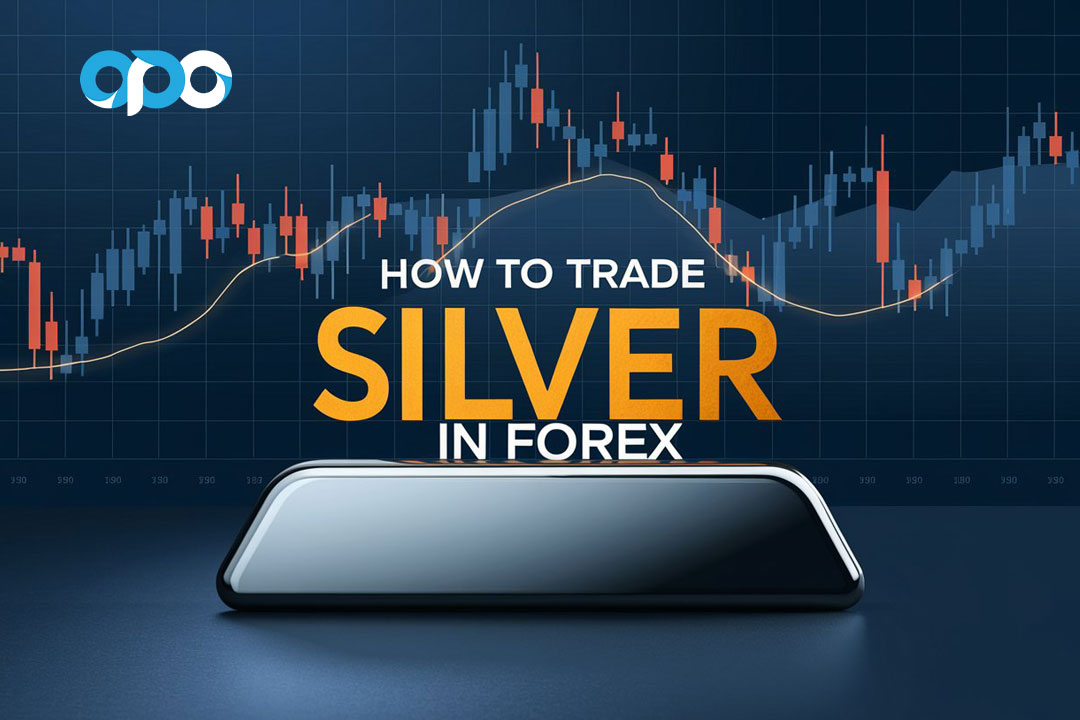
Understanding Silver Trading
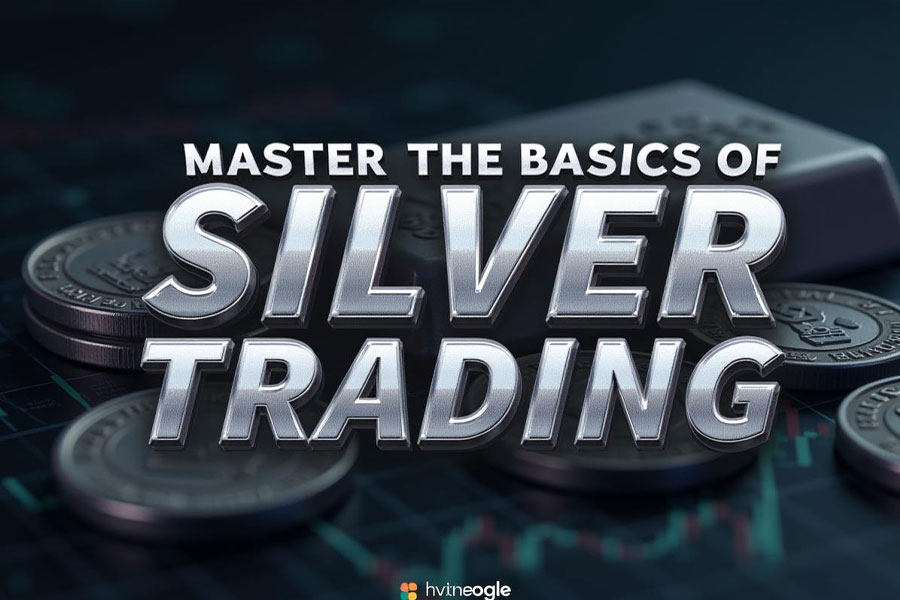
Trading silver in forex means engaging in the buying and selling of silver as a financial asset, rather than holding physical silver. In the forex market, silver is traded against the US Dollar (XAG/USD), similar to how currency pairs like EUR/USD or GBP/USD are traded.
What is Silver Trading?
Silver trading comes in various forms, allowing traders to speculate on the price movement of silver without needing to own the physical commodity. Each trading method comes with its unique advantages and risks. Here are the most common ways to trade silver:
- Contracts for Difference (CFDs): CFDs allow traders to speculate on the rise or fall of silver prices without owning the underlying asset. This form of trading is popular for its flexibility and the ability to use leverage, amplifying potential returns. However, it also increases risks.
- Futures Contracts: These are agreements to buy or sell silver at a predetermined price on a future date. Futures are often used by institutional traders and large investors seeking to hedge their positions or speculate on market movements.
- Options: Options trading offers the right, but not the obligation, to buy or sell silver at a certain price before an expiration date. It is ideal for traders seeking to manage risk or gain exposure to silver with lower upfront costs.
- Exchange-Traded Funds (ETFs): Silver ETFs allow investors to buy shares in funds that track silver prices. This is a simpler and more accessible option for long-term investors who prefer to avoid the complexities of futures or options trading.
Each of these methods offers different levels of flexibility, leverage, and risk. Choosing the one that aligns with your trading goals and risk tolerance is key to success in how to trade silver in forex.
Read More: how to trade news on gold
Why Trade Silver?
Silver trading is highly attractive due to several key factors:
- Liquidity: Silver is a highly liquid asset, which allows traders to easily enter and exit positions with minimal price slippage.
- Volatility: Silver’s price can experience significant fluctuations due to market conditions, providing ample opportunities for traders to capitalize on short-term movements.
- Hedge Against Inflation: Silver, like gold, often serves as a hedge against inflation and economic uncertainty. During times of financial instability, demand for silver typically rises, making it a valuable asset to hold.
Understanding these factors helps traders make informed decisions on whether trading silver is suitable for their portfolio.
Key Factors Affecting Silver Prices

Knowing how to trade silver in forex involves understanding the multitude of factors that influence silver’s price. These factors can change quickly, making it important for traders to stay up to date with market trends.
1. Supply and Demand Dynamics
Silver is not only a precious metal but also has vast industrial applications in electronics, solar energy, and manufacturing. This dual nature means that its price is influenced both by industrial demand and by its status as a safe-haven asset. Changes in supply, such as mining production cuts or increased recycling efforts, can significantly influence the price of silver. Likewise, shifts in industrial demand due to technological advances or changes in consumer preferences can have a notable impact.
2. Global Economic Indicators
Economic conditions, including inflation rates, interest rates, and GDP growth, are vital to the price of silver. For instance, during periods of economic expansion, industrial demand for silver may rise, pushing prices up. Conversely, in times of economic contraction, the demand for silver may decline, causing prices to drop.
3. The US Dollar’s Strength
Since silver is typically traded in US Dollars (XAG/USD), the strength of the dollar plays a direct role in the value of silver. When the dollar strengthens, the price of silver tends to fall as it becomes more expensive for foreign investors. Conversely, when the dollar weakens, silver prices generally rise.
4. Geopolitical Instability
Geopolitical events, such as wars, trade conflicts, or political crises, can cause investors to flock to safe-haven assets like silver. During such times, silver prices often experience significant upward pressure as demand increases.
Read More: How to Trade Crude Oil News
Analyzing Market Trends

Staying informed about market trends is crucial when learning how to trade silver. Here, we’ll look at some of the current and seasonal trends that can affect silver prices.
Current Market Trends in Silver Trading
Understanding the broader economic and geopolitical trends influencing silver prices is vital for making well-informed trades. The following are some key trends impacting silver today:
- Global Economic Conditions: Silver’s price is closely tied to the health of the global economy. In periods of growth, industrial demand for silver rises, leading to higher prices. In contrast, during recessions or economic slowdowns, demand falls, and silver prices may drop.
- Geopolitical Events: Political instability, especially in major economies, can drive investors toward safe-haven assets like silver. This includes trade disputes, elections, or conflicts that create uncertainty in global markets.
- Currency Strength: As mentioned earlier, the value of the US dollar inversely impacts silver prices. If you anticipate a weakening dollar, it could be a good time to take a long position on silver.
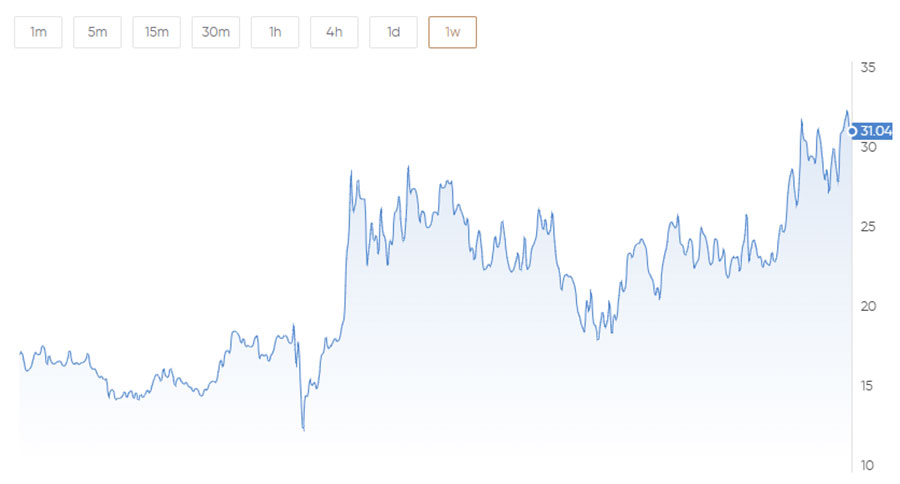
Seasonal Trends in Silver Prices
Historically, silver prices have shown certain seasonal patterns that traders can take advantage of. Recognizing these trends can give traders an edge in predicting short-term price movements:
- Jewelry Demand During Holidays: There’s typically an increase in silver jewelry demand during holiday seasons like Christmas and New Year, often causing silver prices to rise in the final quarter of the year.
- Industrial Demand Cycles: Silver’s use in industrial applications creates cycles where demand ebbs and flows throughout the year. Understanding these cycles can help traders anticipate price fluctuations.
Tip: By staying up to date with both current and seasonal trends, traders can optimize their silver trading strategies for maximum profitability.
Top Strategies for Trading Silver in Forex
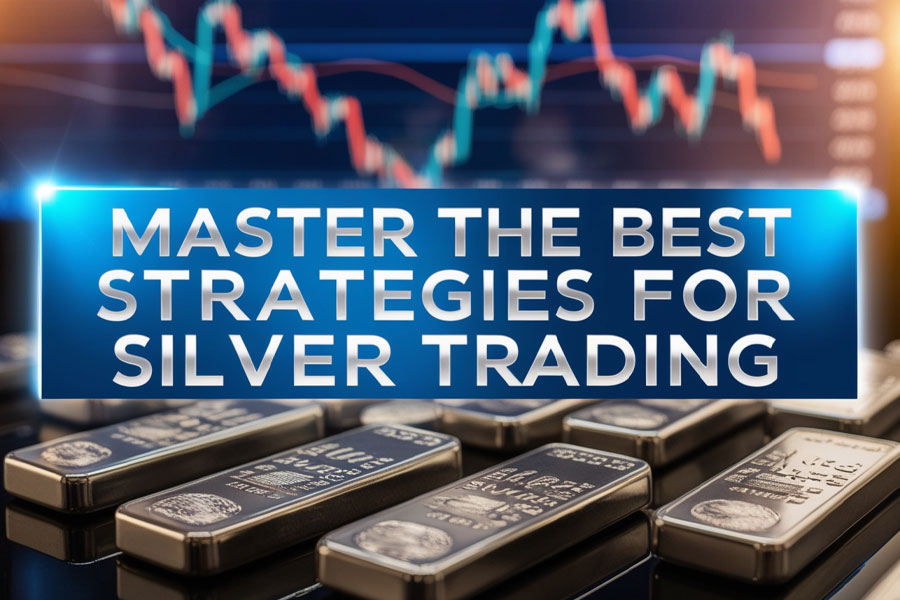
To trade silver in the forex market effectively, you need solid strategies that leverage both technical and fundamental insights. Silver’s volatility, liquidity, and role as both an industrial and precious metal make it a unique asset to trade. Below are some key strategies to help you maximize profits and manage risk while trading silver.
1. Technical Analysis Strategy
Using technical analysis is a popular and effective method for trading silver. By studying price charts and applying key indicators, traders can forecast price movements. Some essential tools for silver trading include:
- Moving Averages (MA): The 50-day and 200-day moving averages are widely used to identify long-term trends, while shorter ones, such as the 10-day MA, help with short-term movements. A moving average crossover is a common signal for changes in trend direction.
- Relative Strength Index (RSI): This momentum oscillator helps spot overbought (above 70) or oversold (below 30) conditions, indicating potential reversals.
- Bollinger Bands: These bands highlight volatility and help identify overbought or oversold conditions. When silver’s price touches the upper band, it may be overbought, while hitting the lower band signals overselling.
- Fibonacci Retracement Levels: Often used to spot potential reversal points, Fibonacci levels (38.2%, 50%, 61.8%) can help determine where the market might change direction during pullbacks or corrections.
- Volume Indicators: Tools like On-Balance Volume (OBV) help confirm price movements by showing the strength behind buying and selling pressure.
Mastering these technical indicators can improve your timing and help you identify better entry and exit points in your silver trades.
2. Trend Trading Strategy
The trend trading strategy focuses on identifying the overall market direction and trading in that direction. Silver, due to its unique characteristics, often experiences sustained trends.
- Identifying the Trend: You can use tools like moving averages, trendlines, or the Average Directional Index (ADX) to detect if silver is in an uptrend, downtrend, or trading sideways.
- Optimal Entry Points: After identifying a trend, traders wait for price pullbacks before entering the trade. Fibonacci retracement tools or support and resistance levels can help pinpoint where to enter.
- Trailing Stop-Loss: Protect your profits by using a trailing stop-loss, which automatically adjusts as the price moves in your favor, ensuring you capture profits while minimizing risks from sudden reversals.
Trend trading is ideal for traders who prefer to hold positions for longer periods, capitalizing on silver’s often significant and prolonged price movements.
3. Fundamental Analysis Strategy
Fundamental analysis focuses on the economic and geopolitical factors that influence silver prices. Understanding these factors can help long-term traders predict market shifts. Key elements to watch include:
- Global Economic Conditions: Economic growth boosts industrial demand for silver, driving prices up, while downturns weaken demand.
- Monetary Policy & Interest Rates: Central banks, especially the Federal Reserve, impact silver prices through monetary policies. Low interest rates and inflation typically boost silver’s appeal as a safe haven.
- Geopolitical Events: Political instability often drives investors to safe-haven assets like silver. Keeping up with geopolitical news helps traders anticipate price surges.
- Industrial Demand: Silver’s use in electronics and solar panels means technological advancements or increased industrial demand can drive prices higher. For example, the solar energy boom has increased silver demand significantly.
By combining fundamental insights with technical tools, traders can make well-informed decisions and gain an edge in the silver market.
4. Scalping Strategy
Scalping is a short-term strategy that focuses on making quick, small profits by capitalizing on minor price movements. Silver’s volatility makes it ideal for this fast-paced trading style.
- Time Frames: Scalpers usually operate on short time frames, such as 1-minute or 5-minute charts, aiming to capture small price fluctuations.
- Low-Spread Brokers: To minimize costs, scalpers need brokers offering tight spreads. High spreads can erode small profits.
- Leverage: Scalpers often use leverage to amplify returns. However, given silver’s volatility, it’s crucial to use leverage carefully to avoid significant losses.
- High Liquidity: Scalping is most effective when markets are liquid, ensuring quick entry and exit. Silver’s liquidity makes it ideal for scalping, especially when major markets are open.
This strategy is fast-paced and best suited for experienced traders who can react quickly to price changes.
5. Breakout Trading Strategy
Breakout trading involves capturing significant price movements that occur when silver breaks through established support or resistance levels. Silver’s volatility makes it particularly well-suited for this strategy.
- Identifying Breakouts: Traders look for consolidation periods where silver trades within a range. Once the price breaks out of this range, it typically leads to a sharp movement. Tools like Bollinger Bands and volatility indicators help spot these opportunities.
- Volume Confirmation: High volume during a breakout indicates a stronger move, while low volume suggests a potential false breakout.
- Stop-Loss Placement: To manage risk, place stop-loss orders just below support or resistance levels to protect your trade in case the breakout fails.
Breakout trading allows traders to take advantage of silver’s sharp and sudden price movements, but it requires vigilance and careful market observation.
These strategies provide different ways to approach trading silver in the forex market. Whether you’re using technical analysis, fundamental analysis, or scalping, understanding silver’s unique traits and combining the right tools can significantly improve your chances of success.
Read More: How to Trade Forex News Spikes
Risk Management in Silver Trading
As with any type of trading, risk management is crucial when trading silver. Proper risk management techniques can help protect your capital and prevent significant losses.
1. Use of Stop-Loss and Take-Profit Orders
One of the best ways to manage risk is by using stop-loss and take-profit orders. A stop-loss order will close your trade if the market moves against you by a specified amount, minimizing your losses. A take-profit order allows you to lock in profits when the market reaches a certain level.
2. Leverage Management
Leverage can amplify both gains and losses. Silver’s volatility makes it essential to use leverage cautiously, especially when trading with highly leveraged accounts. A recommended approach is to limit your use of leverage to no more than 10:1, particularly when trading precious metals.
3. Emotional Control
The volatility of silver trading can make it emotionally challenging. Traders who let emotions guide their decisions often make impulsive trades, resulting in losses. Keeping calm and sticking to a pre-determined trading plan is vital to success.
Opofinance Services: Your Ideal Forex Broker for Trading Silver
If you’re searching for a trustworthy regulated forex broker to trade silver, consider Opofinance. This ASIC-regulated broker offers multiple benefits for traders, including:
- Access to the MT5 Platform: Opofinance is officially featured on the MT5 brokers list, giving you access to advanced charting tools and technical analysis features for silver trading.
- Social Trading Service: With Opofinance’s innovative social trading service, traders can follow and copy successful traders’ strategies, making it easier to participate in the silver market even if you’re a beginner.
- Safe and Convenient Deposits and Withdrawals: Security is paramount when trading forex, and Opofinance provides safe, reliable methods for deposits and withdrawals.

Choosing a reliable broker like Opofinance ensures that your silver trading experience is secure and profitable.
Conclusion
Trading silver in the forex market presents a unique opportunity for both new and experienced traders, thanks to its volatility, liquidity, and status as both an industrial metal and a safe-haven asset. Whether you choose to employ technical analysis, trend trading, or fundamental analysis, understanding how to trade silver in forex requires a combination of knowledge, strategy, and continuous market monitoring.
Silver’s price is influenced by a variety of factors such as global economic conditions, geopolitical events, and currency strength. By staying informed about these market trends and using well-established trading strategies, traders can capitalize on silver’s price fluctuations for potentially high returns.
Choosing the right broker for forex trading is another essential component of successful silver trading. A regulated forex broker ensures transparency, security, and access to advanced trading tools, which are crucial when managing the risks associated with silver’s volatile nature.
By applying strategies like technical analysis, trend following, and breakout trading, traders can find multiple entry points into the silver market, optimize their positions, and manage risk effectively. Additionally, combining both technical and fundamental analysis allows traders to make more informed decisions based on current market conditions, economic news, and geopolitical events.
In conclusion, silver trading in forex offers substantial opportunities for profit, but it demands careful planning, a robust strategy, and a thorough understanding of the market. Keeping up with market trends, using the right strategies, and selecting a reliable, regulated broker will enhance your trading performance. As you begin or continue your journey into silver trading, remember that success comes from continuous learning, adapting to market conditions, and maintaining a disciplined approach. This combination will set you on the path to becoming a successful silver trader in the dynamic world of forex.
Can I trade silver with a forex broker?
Yes, most forex brokers offer silver trading as part of their precious metals lineup. Make sure to choose a broker that provides competitive spreads and low fees for trading silver.
How does the US dollar affect silver prices?
Since silver is typically traded in US dollars, a strong dollar often causes silver prices to fall. Conversely, a weaker dollar tends to drive silver prices higher, making it an important factor to monitor.
What is the best time to trade silver?
Silver is most volatile during times of high economic activity, including the opening of major markets such as New York and London. Monitoring market trends and seasonal patterns can also help in choosing the best time to trade.







